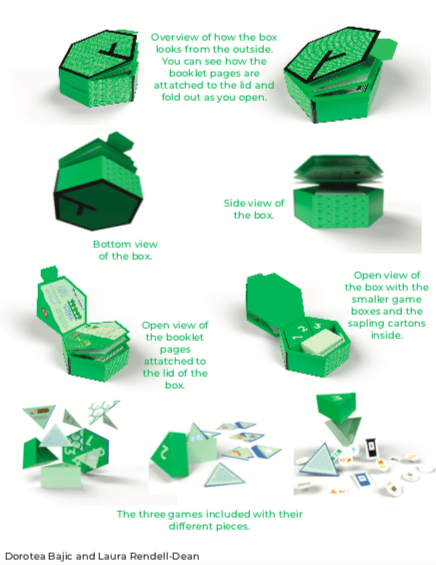By Ivana Vidakovic
Two fourth-year Ryerson students earned first-place in the Paperboard Packaging Alliance (PPA) 2020 Student Design Challenge.
Dorotea Bajic and Laura Rendell-Dean who are both students in the School of Graphic Communications Management (GCM) program, won the competition and earned $5,500 for their design.
PPA is an American-based organization that aims to promote the advantages of paperboard packaging and encourages its use in packaging design and development.
In 2004, PPA began sponsoring the Student Design Challenge for university students across North America. Their goal has been to encourage innovation in paperboard packaging, which is the kind of thick foldable paper used frequently in food packaging.
This year’s challenge asked students to design an educational toolkit that would be used as a part of their Trees into Cartons, Cartons into Trees (TICCIT) program, which teaches K-12 students about the sustainability and compostability of paper.
Bajic and Rendell-Dean, who had worked together previously, chose to compete after talking to assistant professor at GCM, Jay Park. Both Park and associate GCM professor Natalia Lumby served as advisors to the students for the project.
“Because of my interest in social packaging, I was asking my professors at GCM if there was any way I could become more involved,” said Bajic.“ The PPA competition seemed like a good way for me to challenge myself in terms of the structural design of packaging.”
The box Bajic and Rendell-Dean designed for the challenge is completely glue-free in order to ensure fast composting. It was also created for easy assembly by students who can simply sketch the design onto a cereal box, cut it out and put it together. They chose a hexagonal shape in keeping with TICCIT’s brand identity.
Lumby said the goal of these projects was to bring back the public awareness that “paper is a very capable and flexible substrate that is much more renewable and sustainable than some of the plastic options that we’ve been using.”

For Rendell-Dean, this project made her more aware of the abundance of plastic packaging currently in use. In Canada, the majority of plastic waste is packaging and only nine per cent of overall plastic is recycled.
“At the end of the day, even to have a small impact in designing packaging that’s sustainable is really important to me.”
The main priority Bajic and Rendell-Dean was to create an interesting learning experience for K-12 students through their design. “When we received the design prompt to create an educational toolkit, it was quite vague so we had to figure out what the meant by ourselves, but we thought a lot about how to make learning fun for students, which is why we chose to incorporate little games,” said Bajic.
The advising process, involving Lumby and Park, was also instrumental in helping the designs come to life. “A large part of our jobs is to recognize the talents that a student may possess and to guide them in the direction of exploring those talents,” said Lumby.
COVID-19 posed some challenges for the students during their design process, as they were quarantined for much of the time and in two different cities. Sending materials back and forth through e-mail and mail was the way Bajic and Rendell-Dean managed to put together their submission successfully.
Lumby also explained how the lack of lab time and space affected the students. “What the students aren’t saying is that this competition also challenged them to learn and develop a new skill. Since the competition required 3D renderings of the designs, they had to really delve into learning that skill at home,” said Lumby.
Both Bajic and Rendell-Dean agreed this competition solidified the importance of sustainability in packaging for them.
Along with winning the sponsorship of packaging giant Westrock, the design is set to be commercialized. “The fact that the design is being printed and used is huge. This never really happens with competitions,” said Lumby.
Second and third place prizes were awarded to the Rochester Institute of Technology (RIT), and the Fashion Institute of Technology (FIT). RIT’s team consisted of five designers, while FIT’s consisted of four, in contrast to Ryerson’s team of two.
Park added that this is an important win for the Ryerson and GCM community.
“When it comes to bolstering the reputation of an academic institution, competitions like these are the most impressive thing that a student can do, it’s really incredible.”










Leave a Reply